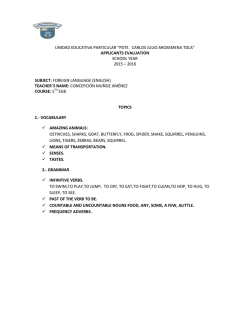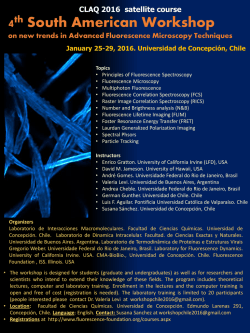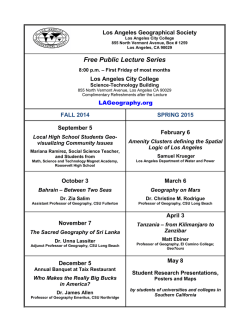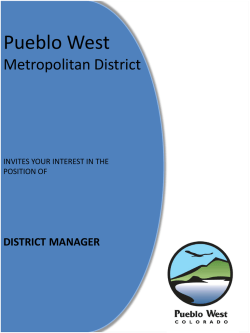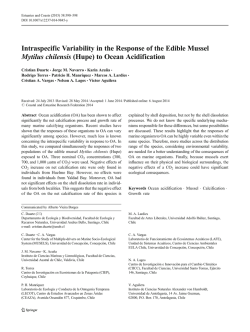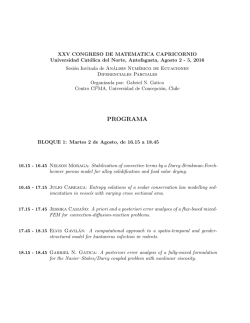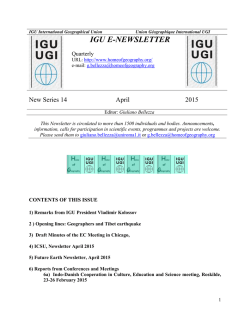
CAROLINA ROJAS QUEZADA Department of Geography, University
C A ROLIN A ROJA S QU E ZA DA Department of Geography, University of Concepción, Victoria Street, Architecture, Urbanism and Geography Faculty, Concepción- Chile; +56412207230; [email protected] C A ROLIN A de CA RVA LHO CA N T E RG IA N I Department of Geography, University of Alcalá, Calle Colegios, 2 – 28801 – Alcalá de Henares, Madrid, Spain; [email protected] W E N S E SLAO PLATA ROCHA School Earth Sciences, University City. Av. of the Américas and Blvd. Univestitarios, CP. 80 000. Culiacán, Sinaloa, México. [email protected] C onc epc ión Met ropolit an A rea: D riving fac tor s it s urb an sprawl in t he la st d ec ade (2 0 01 -2 0 0 9 ) Concepción Metropolitan Area (Chile) is undergoing rapid and growing changes as a result of urban sprawl of its built-up area. These changes are related to an unequal distribution of population on account of their socioeconomic condition, impact on the ecological systems, and location of settlements in inadequate lands exposed to natural risks. Selecting spatial variables, driving factors explaining the remarkable increment of more than 5 thousand ha of built-up area or 40 % of the total landscape pattern, between the years 2001 and 2009, are analyzed. This recent urban growth was detected extracting built-up areas by processing and interpreting Landsat TM 25m satellite images of the former dates. Causal analysis of the increment is performed by the combination of geospatial database in raster format, processed in Geographic Information Systems (GIS) and statistical techniques taken from a Spatial Logistic Regression Model, adjusted to pixel level. The dependent variable, in the model, is a binary map where the values “1” represent urban growth and the values “0” the unchanged areas. Independent variables are a selection of spatial factors on three different fields: (i) biophysical factors like altitude, slopes and natural areas; (ii) socioeconomic factors like population and housing density, population increase, incomes, poverty, density of transport network, amount of real estate projects, and distance to central business districts (CBD), main roads, facilities and shopping centers; and (iii) urban planning or allowed and not allowed land use for the growth of urbanization. The latter ones defined by the Metropolitan Urban Plan. The main results of this study show the major incidence and relevance of some factors in the expansion of the horizontal extension of the built-up area of Concepción Metropolitan Area in the last decade.
© Copyright 2025
